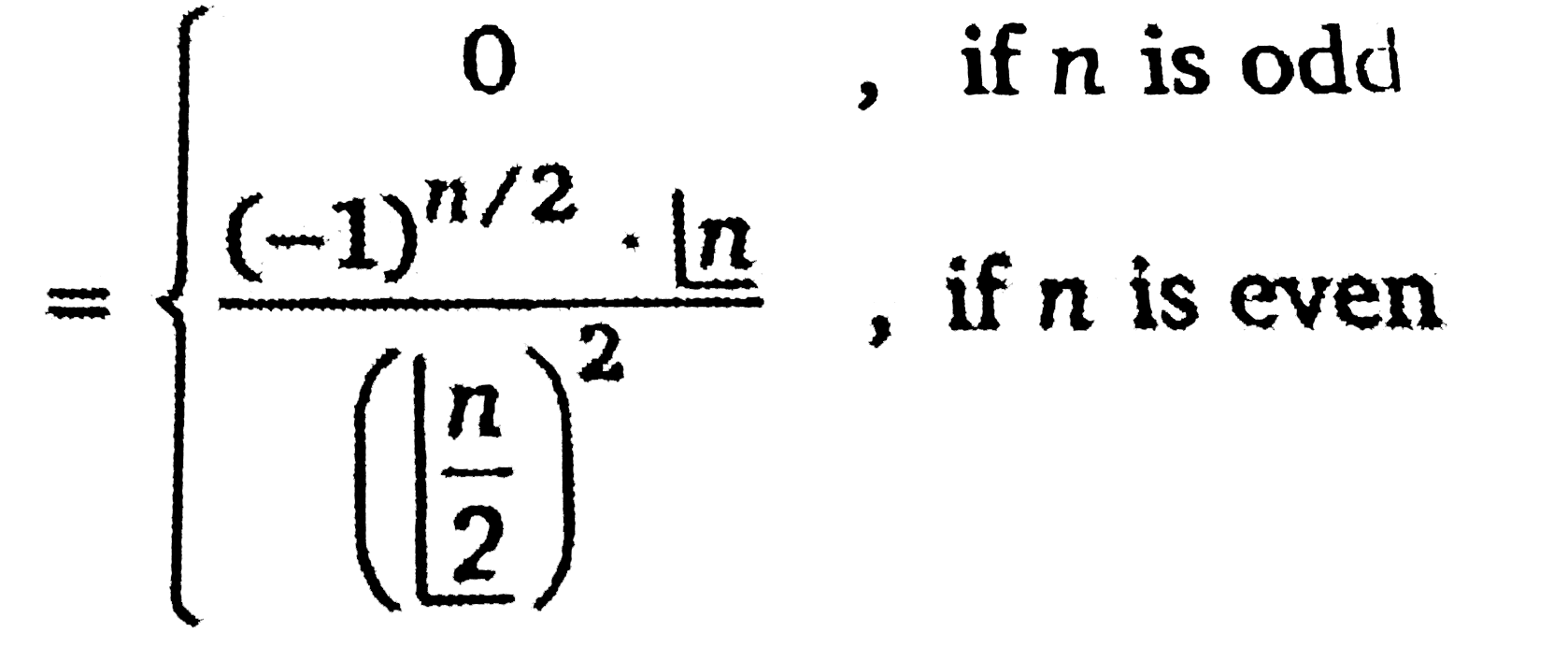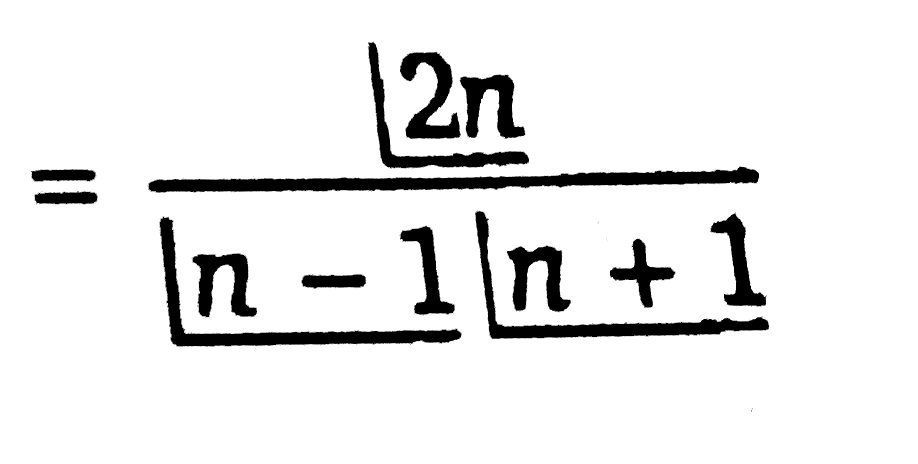C1 तथा C2 धारिता वाले दो संधारित्रों पर आवेश क्रमश: V1 व V2 है। इनको स्पर्श कराकर फिर अलग करने के पश्चात आवेश Q'1 व Q2 तथा विभव में परिवर्तन क्रमश: ΔV1 तथा ΔV2 हो जाते हैं। सिद्ध कीजिये-
(i) Q'1Q'2=(C1VC2V)=C1C2
(ii) C1ΔV1=C2ΔV2
संधारित्रों को स्पर्श कराने से पूर्व, Q1=C1V1 तथा Q2=C2V2
इन्हे स्पर्श कराने पर इनका विभव समान हो जायेगा। अतः
(i) Q'1Q'2=C1VC2V=C1C2
(ii) Q1+Q2=Q'1+Q'2 (आवेश संरक्षण द्वारा)
∴C1V1+C2V2=C1V+C2V
∴C1(V1−V)=C2(V−V2)
अथवा C1ΔV1=C2ΔV2
Topper's Solved these Questions
- BOOK - BALAJI PUBLICATIONCHAPTER - स्थिर वैघुत विभव तथा धारिता EXERCISE - लघु उत्तरीय प्रशन80videos
स्थिर वैघुत विभव तथा धारिता
- BOOK - BALAJI PUBLICATIONCHAPTER - स्थिर वैघुत विभव तथा धारिता EXERCISE - दीर्घ उत्तरीय प्रशन21videos
स्थिर वैघुत विभव तथा धारिता
- BOOK - BALAJI PUBLICATIONCHAPTER - संचार व्यवस्था EXERCISE - NCERT पाठ्य -पुस्तक के हल8videos
संचार व्यवस्था
Similar Questions
विद्युत विभव की परिभाषा लिखिए।
04:06View Solutionवैघृत विभव से आप क्या समझते हैं? एक बिंदु आवेश के कारण किसी बिंदु पर विभव के लिए व्यंजक प्राप्त कीजिये। बहुत से बिंदु आवेश मिलकर किसी बिंदु पर कितना विभव उत्पन्न करेंगे?
06:38View Solutionव्योम तरंगों के उपयोग द्वारा क्षितिज के पार संचार के लिए निम्नलिखित आवृत्तियों में से कौन-सी उपयुक्त रहेगी ?
09:49View SolutionProve that (C_(0)+C_(1))(C_(1)+C_(2))(C_(2)+C_(3))(C_(n-1)+C_(n))=((n+1)^(n))/(n!)*c_(0)*C_(1)*C_(2).........
View SolutionIf (1+x+x^(2))^(n)=(C_(0)+C_(1)x+C_(2)x^(2)+.........) then the value of C_(0)C_(1)-C_(1)C_(2)+C_(2)C_(3)...
View SolutionThe capacities of two parallel plate capacitors are C1 and C2 and their respective potential are V1 and V2. If they are connected by a thin wire, then
(A) Commen potential will be C1V1+C2V2C1+C2, if plates of same polarities are connected together
(B) Loss of energy will be 12C1C2C1+C2(V1−V2)2, if plates of same polarities are connected together
(C) Common potential will be |C1V1−C2V2|C1+C2, if plates of opposite polarities are connected togetherView SolutionIn C_(0),C_(1)C_(2)….C_(n) are the binomial coefficients in the expansion of (1+x)n then prove that :
(i)C20−C21+C22−C23+…..+(−1)n.C2n

(ii)C0C1+C1C2+C2C3+....+Cn−1Cn
 View Solution
View SolutionIn C0,C1C2….Cn are the binomial coefficients in the expansion of (1+x)n then prove that :
(i)C20−C21+C22−C23+…..+(−1)n.C2n

(ii)C0C1+C1C2+C2C3+....+Cn−1Cn
 08:21View Solution
08:21View Solutionयदि (1+x)n के प्रसार में द्विपद गुणांक C0,C1,C2,...Cn हैं ,तो सिद्ध कीजिए ,कि - (i) C20−C21+C22−C23+...+(−1)n⋅C2n=⎧⎪⎨⎪⎩0,यदि n विषम है(−1)n/2(⌊n/2)2,यदि n विषम है
C0C1+C1C2+C2C3+...+Cn−1⋅Cn=⌊2n⌊n−1⌊n+104:08View Solutionयदि C0,C1,C2,.....Cn सभी (1+xn) के प्रसार में गुणांक है, तो सिद्ध कीजिएः
(1+C1C0)(1+C2C1)(1+C3C2)........(1+CnCn−1)06:11View Solutionसिद्ध कीजिए कि :
∣∣ ∣ ∣∣111mC1m+1C1m+2C1mC2m+1C2m+2C2∣∣ ∣ ∣∣=1.View Solution∣∣ ∣ ∣∣111.nC1.n+1C1.n+2C1.nC2.n+1C2.n+2C2∣∣ ∣ ∣∣=1
02:10View SolutionTan−1c1x−yc1y+x+Tan−1c2−c11+c2c1+Tan−1c3−c21+c3c2+...Tan−11cn=
03:27View SolutionIf (1+x+x2)n=c0+c1x+c2x2+…., then the value of c0c1−c1c2+c2c3−…… is
06:30View SolutionProve that :
2C1+3C1+4C1=3C2+4C2.06:38View Solution

